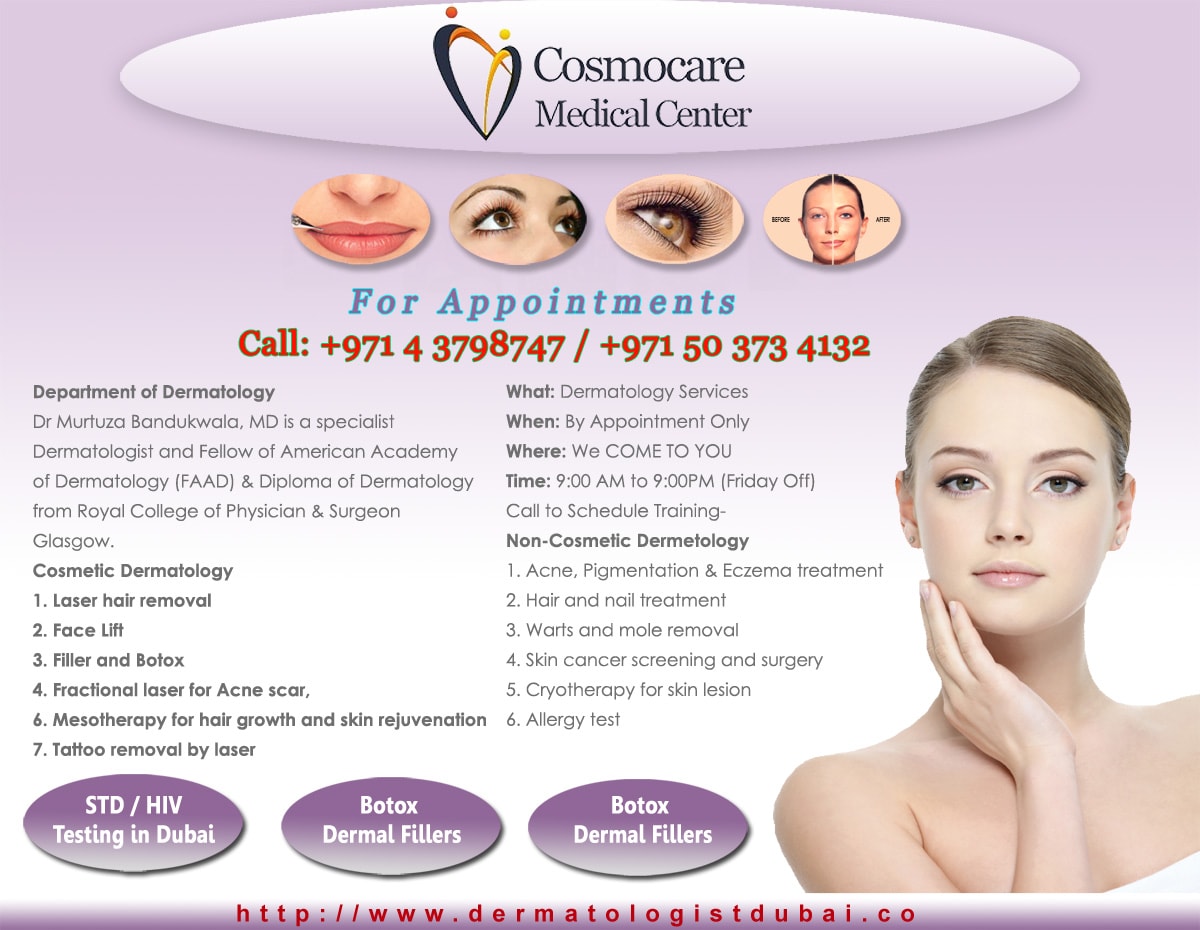Mob: +971-50-373 4132
Tel: +971 4 379 8747
E: info@cosmocaremedicalcenter.com
Getting Rid of Moles – for People in Dubai, UAE
ARE MOLES RUINING YOUR SELF-CONFIDENCE?
Mole Removal Doesn’t Need To Be Expensive, Painful and Difficult…
REVEALED HERE: THE most effective way to remove moles in Dubai!
It’s unsightly, it’s on your face, and you hate it!
Even if your mole is benign and completely harmless, the days where moles were regarded as “beauty spots” are long gone. These days, moles aren’t regarded so highly and if you’ve got a mole on your face, you’re going to feel self-conscious, especially when no amount of make-up can conceal it.
Mole removal on Face
Special Offer : AED 249.00 (t&c)
Luckily, in the 21st century there are many options to get rid of your moles—whether on your face or other parts of your body. The problem with many of these options is that they’re too expensive, too painful or just too difficult and weird. Mole removal in Dubai offers many options, but too few of them are attractive.
Laser Mole removal on Neck in Dubai
Mole, Warts and Skin tag removal in Dubai
Facial moles and lesions appear commonly on the cheeks, nose, forehead or neck and can be unsightly based upon their size and location. Warts, Skin Tags, Lesion and Mole removal is a very common procedure in Dubai chosen by thousands of men and women every year. Several types of treatments are used to accomplish safe, effective removal with minimal downtime or discomfort. Dr. Murtuza certified dermatologist performs facial mole/lesion removals as an office procedure and his patients return to work or normal activity in a short period of time.
You should get your mole checked by skn if:
- It changes colour
- It has an uneven or ragged edge
- It's inflamed or painful
- It’s itchy, bleeding or oozing
- It has changed shape and looks different to your other moles
- It’s protruding and causing irritation
- You simply don’t like the look of it
WHY FACIAL MOLE – LESION REMOVAL?
- Facial Mole & Lesion Removal is performed for both health & cosmetic reasons
- Facial Mole & Lesion Removal employs several – safe-effective methods
- Facial Mole & Lesion Removal eliminates concerns about possible cancer
- Facial Mole & Lesion Removal improves a person’s cosmetic appearance
- Facial Mole & Lesion Removal is an office procedure
- Facial Mole & Lesion Removal involves little or no downtime & discomfort
- Dr. Yeh is an expert in all mole/lesion removal methods

What is a mole (nevus)?
Moles, known medically as nevi, are clusters of pigmented cells that often appear as small, dark brown spots or raised lesions. However, moles can come in a range of colors and can develop virtually anywhere on your body.
Most moles are harmless, but in some cases, moles may become pre-cancerous or cancerous. Monitoring moles and other pigmented patches is an important step in detecting skin cancer, especially malignant melanoma. Not all melanomas develop from pre-existing moles, but many begin in or near a mole or other dark spot on the skin.
What if I have a changing mole?
Any new or changing mole should be evaluated to make sure that it is not cancerous. If you have numerous moles - 20 or more - you are at increased risk for atypical or dysplastic moles. If you have a family history of melanoma or atypical moles, then you are also at increased risk for developing atypical moles and rarely melanoma.
Examine your skin carefully on a regular basis - ideally once a month, especially if you have a family history of melanoma - to detect early skin changes that may signal melanoma.